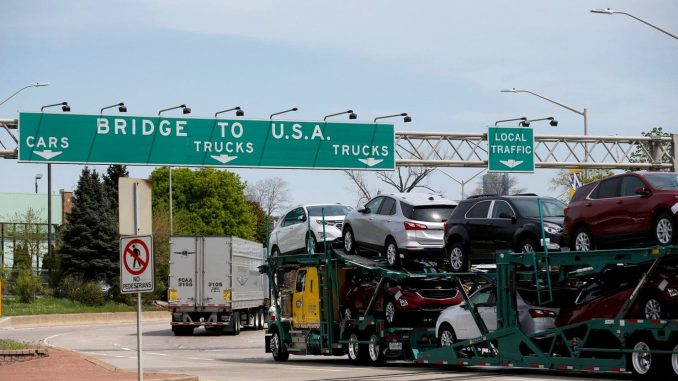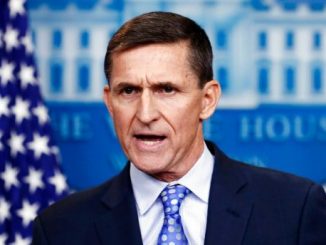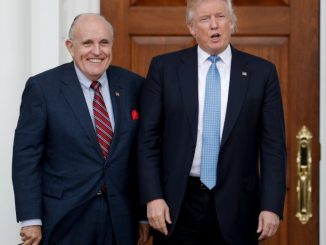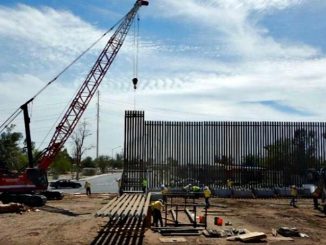
By David J. Lynch The Washington Post
Canada late Sunday agreed to join the trade deal that the U.S. and Mexico announced last month, with a public announcement expected before a self-imposed midnight deadline designed to allow the current Mexican president to sign the accord on his final day in office, according to two people familiar with the talks.
Diplomats from all three countries engaged in a flurry of telephone consultations over the weekend, reviving hopes of preserving the three-country format of the original North American Free Trade Agreement favored by business groups and congressional Republicans.
Few details of the agreement were immediately available ahead of the announcement. But Canada’s dairy management system and a dispute resolution process were among the last sticking points, according to those familiar with the talks, who spoke on condition of anonymity to discuss confidential deliberations.
Widget not in any sidebars
The new treaty is expected to be signed by President Trump and his Canadian and Mexican counterparts in 60 days, with Congress likely to act on it next year.
Administration officials anticipate a fierce political battle to win congressional approval, especially if Democrats regain control of the House of Representatives in November.
“We will enter October with a trilateral North American trade deal,” said Dan Ujczo, a trade lawyer with Dickinson Wright.
“This was the least difficult part. The heavy lift is going to be getting a trade deal through the next Congress in 2019 as well as ratification by Mexico’s new Congress and in Canada during a federal election year.”
Securing a replacement for the nearly 25-year old NAFTA would be a major accomplishment for President Trump and his chief trade negotiator, Robert E. Lighthizer.
The president, long a NAFTA critic, complains that the original treaty cost the United States millions of factory jobs and led to persistent U.S. trade deficits with its southern neighbor.
Last year, the U.S. goods imports from Mexico exceeded exports by $71 billion. So far this year, the trade deficit with Mexico is even larger.
The president is engaged in a broad campaign to overhaul the U.S. approach to its major trading partners.
After 20 months in the White House, the president has upended relations with countries that account for roughly two-thirds of the $3.9 trillion in goods that the U.S. buys and sells globally.
He has refreshed existing trade deals with South Korea and, now, his North American neighbors, and threatened China with new trade barriers and investment limits unless it abandons its state-backed economic model.
Like no American chief executive since the 1930s, Trump has embraced tariffs as his weapon of choice in a multi-front trade war that he vows will return prosperity to shuttered American factories even as critics complain it will cost several jobs for each one it creates.
Sunday morning, Peter Navarro, one of Trump’s closest White House trade advisers, said negotiators were working “in good faith” to reach a three-country deal by midnight and had reached “broad agreement” on most issues.
“There are several sticking points,” he acknowledged.
One of the toughest obstacles was Canada’s demand for an exemption or other form of protection from the president’s tariffs on imported steel and aluminum, which may potentially be extended to automobiles from Canadian factories.
Canada is expected to agree to some form of quota on its shipments to the United States, according to two sources briefed on the talks who asked for anonymity to discuss confidential deliberations. But details remained to be worked out Sunday evening.
Other final issues included U.S. demands for greater access to Canada’s dairy market and Canadian insistence on preserving a dispute settlement process that Washington wants to scrap.
Negotiations over changes in Canada’s dairy management program continued past 8:30pm Sunday, though Canadian officials had signaled a willingness to grant American farmers the same improved terms Ottawa had agreed to in an earlier Pacific trade deal that Trump quit shortly after taking office.
Provincial elections in Quebec, a center of the Canadian dairy industry, also were overshadowing the talks. Canadian officials were reluctant to surrender on the politically sensitive dairy issue as voters head to the polls on Oct. 1, according to several analysts following the talks.
Administration officials have insisted all month that they needed to release the text of the new deal — with both countries or only Mexico — by Sept. 30. That would comply with a congressional notification requirement and allow Mexican President Enrique Peña Nieto to sign the deal on his last day in office, they said.
Officials said they wanted the deal signed before the new Mexican president, left-wing populist Andrés Manuel López Obrador, took office in case he sought changes.
But López Obrador said Friday that he would not try to reopen talks, calling into question the validity of the negotiators’ self-imposed deadline.
“The fact that the administration is so eager to press to a deal, despite (the) statement that he has no intention of renegotiating, suggests that the real quest here is for a deal to wave around during the next month of midterm campaigning,” said Phil Levy, a former White House economist in the George W. Bush administration.
Since the three-nation talks began in August 2017, negotiators have declared and missed several deadlines.
The new deal preserves a regional economic unit that enables North American manufacturers, particularly in the auto industry, to compete against global rivals. Canada and Mexico rank first and second among export markets for U.S. companies. Total U.S. trade with the two countries last year topped $1.1 trillion.
A central objective for the new agreement is restoring “North America as a manufacturing powerhouse” by encouraging U.S. companies to use domestic suppliers rather than companies based elsewhere, Navarro said.
The agreement will require that 75 percent of vehicles granted duty-free treatment be made in North America versus the current 62.5 percent mandate.
It will also require greater use of domestic steel and other materials and establish a new requirement for work to be performed by workers earning at least $16 an hour, which will benefit the United States and Canada at the expense of Mexico.
NAFTA took effect in 1994 with bipartisan support from Republican President George H.W. Bush, who signed it in 1992, and Democratic lawmakers who approved it the following year.
But the treaty was controversial from the start.
Critics included American labor unions and Ross Perot, a businessman and third-party presidential candidate, who warned of a “giant sucking sound” as employers would relocate jobs to low-wage Mexico.
The president last week said he would no longer use the NAFTA name, instead christening the new deal “the U.S.-Mexico-Canada agreement” or USMC.
Damian Paletta contributed to this report.







Be the first to comment